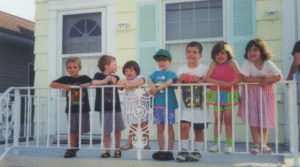Toys play an essential role in a child’s development by fostering creativity, problem-solving skills, and social interaction. However, not all toys are safe, and improper selection or use of toys can lead to accidents and injuries. According to the U.S. Consumer Product Safety Commission (CPSC), thousands of children visit emergency rooms annually due to toy-related injuries. Understanding toy safety guidelines can help parents and caregivers ensure that playtime remains a fun and safe experience for children.
Understanding Age-Appropriate Toys
One of the most crucial aspects of toy safety is selecting age-appropriate toys. Manufacturers provide age recommendations based on safety standards, taking into account factors such as small parts, complexity, and the physical and cognitive abilities required to use the toy.
- Infants (0-12 months): Toys should be soft, lightweight, and free of small parts that could pose a choking hazard. Rattles, soft dolls, and textured teething toys are good choices.
- Toddlers (1-3 years): Avoid toys with small detachable parts, sharp edges, or long cords that could pose choking or strangulation risks. Sturdy, well-constructed toys like building blocks and push-and-pull toys are recommended.
- Preschoolers (3-5 years): While children in this age group enjoy more interactive and complex toys, it is still important to avoid toys with small parts. Art supplies should be labeled as non-toxic, and ride-on toys should include safety gear.
- School-Aged Children (5+ years): Board games, puzzles, and science kits are appropriate, but parents should ensure the toys do not contain small parts if younger siblings are present.
Common Toy Hazards
Several hazards make certain toys unsafe for children. Recognizing these risks can help prevent injuries:
- Choking Hazard: Small parts, such as buttons, beads, and detachable doll accessories, can pose a choking risk for young children. If an object can fit inside a toilet paper roll, it is too small for a child under three years old.
- Strangulation Hazard: Long cords or strings on toys can wrap around a child’s neck, leading to strangulation. Avoid toys with long pull cords, especially for young children.
- Sharp Edges and Points: Broken or poorly manufactured toys may have sharp edges that can cause cuts and injuries. Always inspect toys for damage and discard any broken items.
- Toxic Materials: Some toys may contain lead, phthalates, or other harmful chemicals. Look for labels stating that the toy is non-toxic and complies with safety standards set by organizations like ASTM International.
- Magnet and Battery Hazards: Small, powerful magnets and button batteries can be extremely dangerous if swallowed, potentially leading to serious internal injuries. Ensure battery compartments are securely fastened with screws and keep magnetic toys out of reach of young children.
Tips for Toy Safety
To ensure child toy safety, parents and caregivers should follow these practical tips:
- Read Labels and Warnings: Always check the packaging for safety information, age recommendations, and materials used.
- Inspect Toys Regularly: Look for loose parts, broken edges, or other signs of wear that may make a toy unsafe.
- Supervise Playtime: While children should be encouraged to play independently, adult supervision helps prevent accidents.
- Store Toys Safely: Keep toys organized and stored properly to prevent tripping hazards or access to unsafe items.
- Buy from Reputable Brands: Purchase toys from well-known manufacturers that follow safety regulations.
- Be Aware of Recalls: Stay updated on toy recalls by checking websites like the CPSC to ensure toys in the home are safe.
Conclusion
Toy safety is an essential consideration for parents and caregivers. By choosing age-appropriate toys, being aware of common hazards, and following safety guidelines, adults can create a secure and enjoyable play environment for children. Playtime should be a source of joy, learning, and creativity, and taking proactive steps toward toy safety ensures that children can explore and develop without unnecessary risks. By staying informed and vigilant, parents can protect their children and foster a safe and nurturing environment for growth and development.



